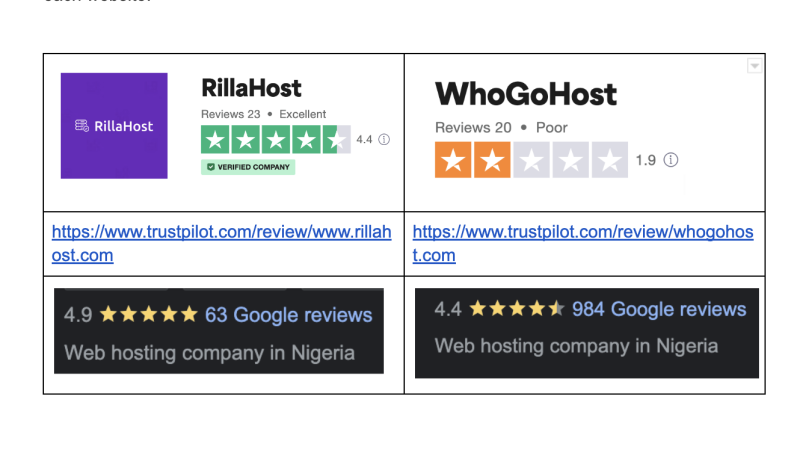
How Website Uptime And Downtime Better Impacts Your Business
Website uptime and downtime are critical to the success of your business.
How? Imagine you’re working online and suddenly, your website starts hanging. That drastic and awful experience of seeing your efforts going down the drain isn’t great, right?
If you’ve ever worked on a project and tried to save a draft, only to be met with an error message, you’ll understand the pains. In my case, the website downtime came from the hosting provider.
Basically, I lost all the recent progress I had made in my work and had to start over again when the server came back up.
Just think how terrible this would be for anyone, especially if it happened continuously. Think about how it impacts the customers and the users as well.
Website uptime and downtime are things you should look out for as a website owner. Frequent or prolonged website downtime can lead to plummeting search ranking, decreased organic traffic, and even potential revenue loss.
Usually, search engines prioritize websites that offer a reliable and seamless experience to users. But when your website experiences constant downtime, it disrupts this expectation.
Is there a way to prevent this? Without further ado, let’s see what we can do.
What Does Website Uptime and Downtime Mean?

Website downtime is when your site is completely inaccessible to users due to certain technical issues.
Website uptime refers to the amount of time your website stays up and running without any interruptions or downtime.
One has to look out for both practices to have a seamless and user-friendly website.
Factors Behind Website Uptime and Downtime
There are a variety of technical factors that can influence website uptime and downtime.
From server issues and hosting provider reliability to maintenance routines and experienced traffic spikes. Each of these aspects plays a role in determining how often your website is accessible.
Third-party services that rely on Content Delivery Networks (CDNs) or plugins, can also impact your website’s downtime and uptime.
Mitigating Website Downtime

Monitoring your website uptime and downtime is a proactive approach that pays dividends.
Utilise tools that notify you of downtime instantly, allowing you to take prompt action. Some of these tools are free: DownNotifier and Supermonitoring.
There are also paid options available such as Site24×7 and Pingdom.
Additionally, during planned downtime, such as maintenance, consider implementing temporary maintenance pages to inform users and search engines that the downtime is intentional.
This can help minimize the negative effect on SEO.
Real-World Case Studies of Website Uptime and Downtime
Consider the case of Company A, an e-commerce giant that experienced a series of unexpected downtime incidents. Their search ranking dropped, organic traffic dwindled, and their revenue took a hit.
In contrast, Company B, a competitor, invested in robust hosting solutions and vigilant monitoring.
They maintained a stellar uptime record, resulting in consistent search visibility and sustained organic growth.
What does this scenario tell you? Having website downtime and uptime doesn’t just affect you, but your business as well.
It impacts how people and Search Engines see your website and the services you offer; whether positively or negatively.
Typical Average Website Uptime
Average Website Uptime generally hovers around 99%, indicating the website should be accessible 99% of the time.
While this is a fairly dependable statistic, variations can occur based on the hosting provider and website type. In general, a reputable hosting provider should maintain approximately 99% uptime.
RillaHost is one of the best hosting companies available. We offer 99.9℅ server uptime and users are pre-informed if there’s a likelihood of a 0.01℅ downtime performance.
Another best practice to prevent your website from experiencing downtime is constant monitoring. To detect and address downtime, use the necessary tools such as:
Downtime monitoring services help online businesses as they improve user experience for your website visitors. It quickly gives notifications of a problem on your website.
SEO Considerations During Website Downtime

Downtime affects your websites and disrupts users’ experience. Search engines will consider the length and frequency of downtime on your website before penalizing it.
Also, search engines could check your website’s HTTP status code to detect website downtime through the status code.
The 503xxx series indicates a temporary server issue, making search engines not penalize your website.
4 Best Practices To Save Your Business Website From Constant Downtime
- Choose a reliable Hosting: Opt for a reliable and trustworthy hosting provider known for uptime performance such as RillaHost.
- Maintain Your Website Regularly: Schedule maintenance during low-traffic periods and inform users in advance.
- Have an emergency response plan: Prepare a plan to swiftly address unexpected downtime and communicate accordingly with users.
- Implement redundancy: Use redundancy mechanisms such as failover to handle website uptime and downtime and minimize the downtime impact.
Conclusion
The best site performance keeps your platform running and protects your business from crashing due to website uptime and downtime.
Remember website downtime can cast a shadow over your SEO efforts and businesses.
By understanding the profound impact of these concepts and adhering to best practices, you can ensure your website remains accessible and reliable in the digital landscape.












